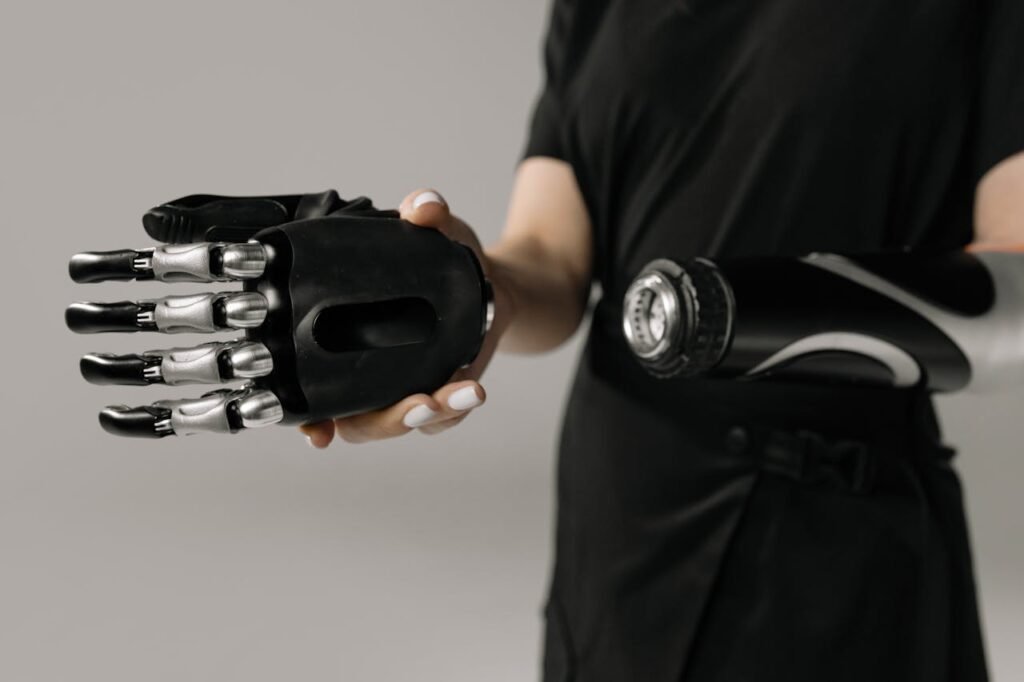Transitioning from a temporary to a permanent prosthetic limb is a significant step in your journey to regain mobility, independence, and confidence. It’s a moment filled with anticipation, but it can also come with questions and challenges. What’s the right time to make the switch? How do you ensure the permanent prosthetic suits your lifestyle and needs?
This guide aims to provide clarity and actionable advice for a smooth and successful transition. Whether you’re just beginning the process or preparing to take the next step, understanding what to expect and how to navigate each stage will help you make informed decisions.
Understanding the Role of Temporary Prosthetic Limbs
Temporary prosthetic limbs play a crucial role in the rehabilitation process. These devices, also known as preparatory prosthetics, are designed to support your initial recovery after amputation. They allow you to begin regaining mobility, balance, and confidence while your residual limb heals and stabilizes.
Helping You Adjust to Prosthetic Use
Learning to use a prosthetic limb is a gradual process, and temporary prosthetics provide an essential training period. During this time, you’ll work with physical therapists and prosthetists to learn proper techniques, build strength, and adapt to the new sensations and movements.
For businesses, emphasizing the importance of this adjustment phase when consulting with users can help set realistic expectations. Providing resources such as instructional videos or interactive guides ensures users feel supported as they navigate the challenges of early prosthetic use.
Preparing the Residual Limb
The residual limb undergoes significant changes in the months following amputation, including swelling, muscle atrophy, and changes in skin sensitivity. Temporary prosthetics are designed to accommodate these fluctuations, helping the limb stabilize and prepare for a permanent prosthetic.
For example, adjustable sockets in temporary prosthetics allow for minor modifications as the residual limb shrinks and reshapes. Educating users about this process helps them understand why patience and adaptability are crucial during the early stages.
Timing the Transition: When to Move to a Permanent Prosthetic
Determining the right time to transition to a permanent prosthetic depends on several factors, including the healing of your residual limb, your progress with temporary prosthetic use, and your overall health and goals.
Monitoring Limb Stability
One of the most important indicators that you’re ready for a permanent prosthetic is the stability of your residual limb. Once swelling has subsided, and the limb’s size and shape remain consistent over time, you can begin the process of fitting a permanent prosthetic.
Businesses can support this phase by offering tools to track residual limb changes, such as measuring kits or apps that record limb circumference over time. These tools empower users to monitor their progress and communicate effectively with their prosthetist.
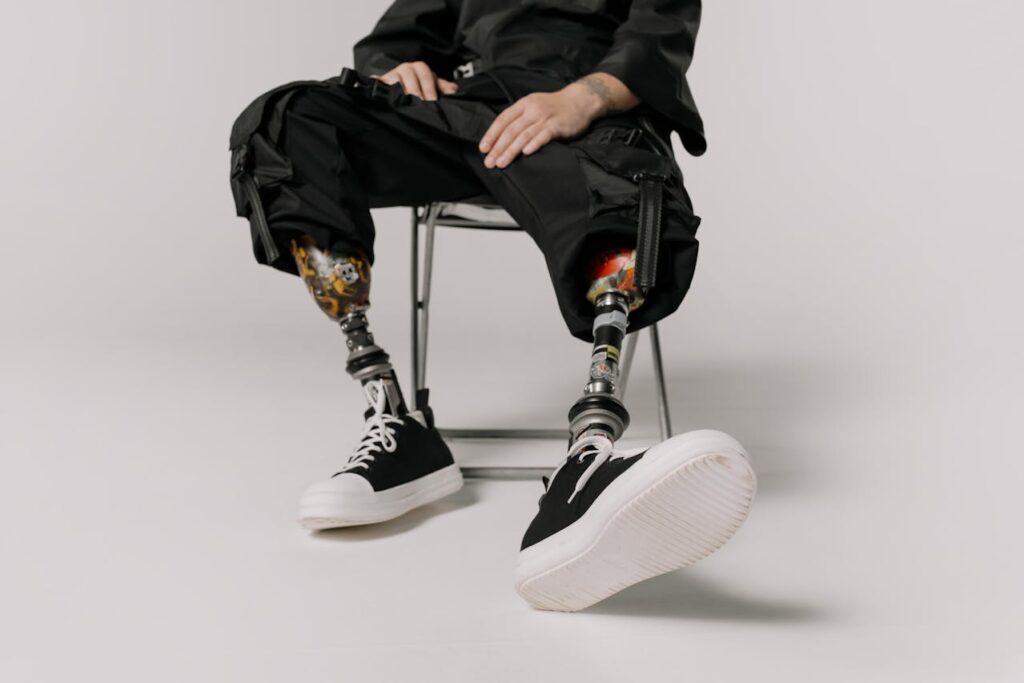
Evaluating Mobility and Comfort
Your experience with a temporary prosthetic provides valuable insights into what you’ll need in a permanent device. Pay attention to factors like comfort, mobility, and the types of activities you’re able to perform.
For example, if you’ve found certain features of your temporary prosthetic limiting, such as a lack of flexibility or insufficient grip strength, these observations can guide the design of your permanent limb.
Businesses can enhance this evaluation process by offering consultations or assessment tools that help users identify their preferences and priorities.
Choosing the Right Permanent Prosthetic
The move to a permanent prosthetic is an opportunity to refine your experience and choose a device that aligns with your lifestyle, goals, and physical needs. This step is crucial in ensuring long-term comfort, functionality, and satisfaction.
Customizing for Fit and Comfort
A well-fitted permanent prosthetic is essential for preventing discomfort and ensuring usability. The socket, which connects the prosthetic to your residual limb, is the most critical component. It must fit snugly while allowing for natural movement and reducing pressure points.
Custom fittings typically involve advanced technologies, such as 3D scanning and digital modeling, to create a socket that conforms precisely to your anatomy.
For businesses, investing in these technologies ensures a high level of precision and enhances the user experience. Communicating the value of these advancements during consultations builds trust and confidence in your offerings.
Additionally, permanent prosthetics often use advanced liners made from materials that are breathable, hypoallergenic, and soft against the skin. Highlighting these comfort-focused features when presenting options to users helps them make informed decisions about what will work best for their daily lives.
Selecting Features Based on Lifestyle
Permanent prosthetics can be tailored to suit various lifestyles, whether you prioritize functionality for everyday tasks, performance for active hobbies, or aesthetic appeal. Working closely with your prosthetist to define your needs and goals ensures your prosthetic supports the life you want to lead.
For example, a lower-limb prosthetic designed for someone with an active lifestyle might include features like energy-return feet or microprocessor-controlled knees that enhance mobility and stability during high-impact activities.
In contrast, an upper-limb prosthetic for a professional setting might focus on dexterity and aesthetics, such as lifelike fingers or a natural appearance.
For businesses, offering a range of customizable features—such as interchangeable components or modular designs—broadens your appeal to users with diverse needs. Clearly demonstrating how these options align with specific lifestyles enhances the decision-making process for users.
Adapting to Your Permanent Prosthetic
Transitioning to a permanent prosthetic involves another period of adjustment as you adapt to the new device and its features. This phase requires patience, practice, and support from professionals and loved ones.
Building Strength and Confidence
Even if you’ve grown comfortable with a temporary prosthetic, a permanent one may feel different due to its advanced design or added functionality. Physical therapy plays a critical role in this phase, helping you build the strength and coordination needed to use your prosthetic effectively.
For businesses, partnering with rehabilitation centers or offering in-house therapy services adds value to the user experience. Providing training resources—such as videos, brochures, or mobile apps—ensures users have the guidance they need at every stage of their transition.
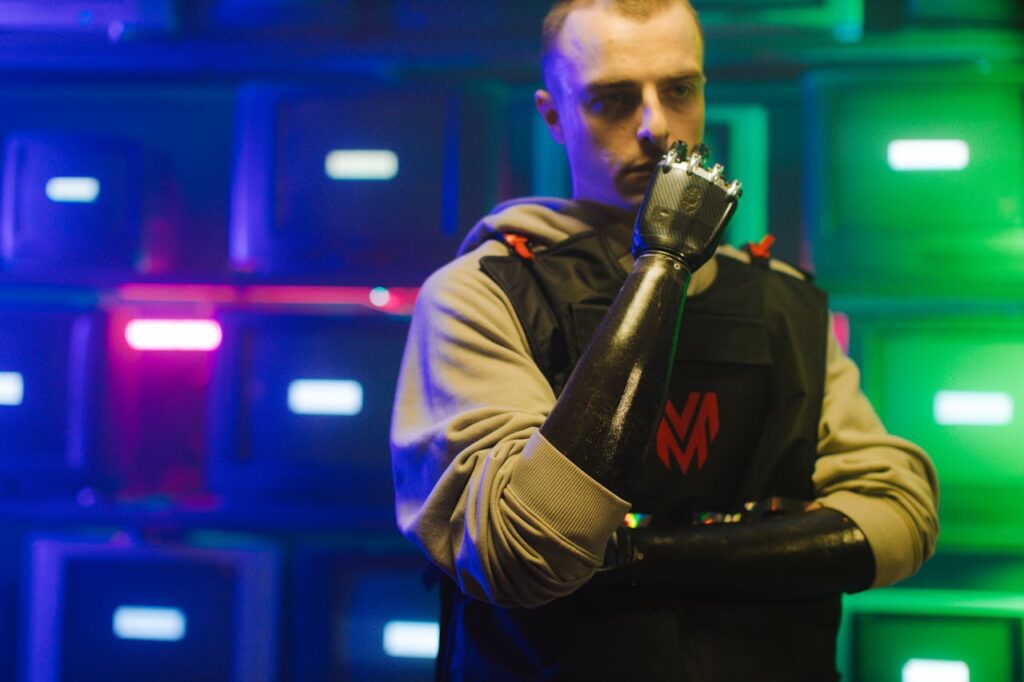
Addressing Challenges
Adapting to a permanent prosthetic can come with challenges, from initial discomfort to learning how to use advanced features. Open communication with your prosthetist is key to resolving these issues.
Regular check-ups allow for adjustments to the fit or settings, ensuring your prosthetic continues to meet your needs as your body adapts.
Businesses can enhance this process by offering responsive customer support and accessible maintenance services. For example, a dedicated helpline or virtual consultation platform allows users to seek help whenever they encounter difficulties, fostering trust and satisfaction.
Maintaining Your Permanent Prosthetic
Once you’ve adapted to your permanent prosthetic, maintaining its functionality and longevity becomes a crucial part of your journey. Regular care and proactive management ensure that your prosthetic remains comfortable, reliable, and aligned with your lifestyle over the long term.
Establishing a Maintenance Routine
Prosthetic limbs, like any advanced device, require regular upkeep to stay in optimal condition. This includes cleaning, inspecting for wear and tear, and scheduling professional check-ups.
For example, cleaning the socket daily with mild soap and water prevents irritation or infection, while periodic checks for loose components ensure safe operation.
For businesses, providing users with detailed care instructions—whether through printed manuals, videos, or mobile apps—reinforces the importance of maintenance. Offering easy access to replacement parts or repair services further builds trust, ensuring users feel supported throughout their prosthetic journey.
Monitoring Your Residual Limb
Changes to your residual limb over time can affect the fit and functionality of your prosthetic. Factors such as weight fluctuations, muscle growth, or changes in skin condition may require adjustments to the socket or other components.
Regularly monitoring your limb and communicating any changes to your prosthetist ensures continued comfort and usability.
Businesses can create value by offering periodic re-evaluation services, allowing users to adjust their prosthetics as needed. Digital tools, such as apps that track residual limb measurements, empower users to take an active role in monitoring their progress and identifying when adjustments are necessary.
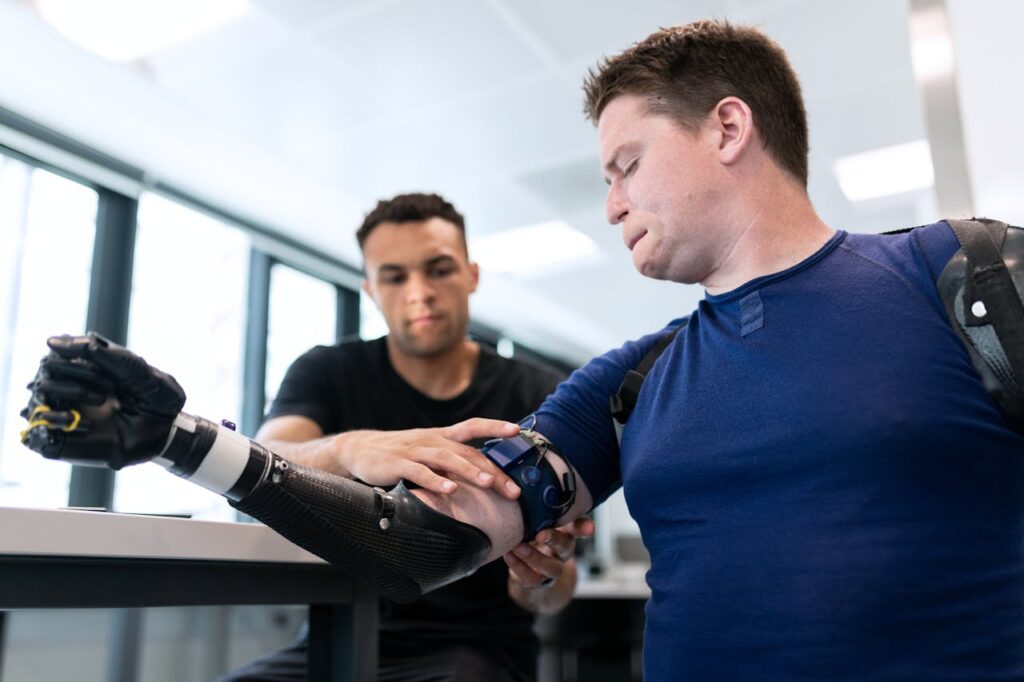
Upgrading or Enhancing Your Prosthetic
Your needs and goals may evolve over time, requiring upgrades or enhancements to your permanent prosthetic. For example, you might transition from a basic design to a more advanced model with additional features, such as enhanced mobility, durability, or aesthetic appeal.
For businesses, emphasizing the modularity and upgradability of your products can appeal to users seeking long-term value. Offering trade-in programs, loyalty discounts, or financing options for upgrades ensures users can access the latest innovations without financial strain.
Emotional and Psychological Considerations
The transition from a temporary to a permanent prosthetic is not only a physical adjustment but also an emotional one. It’s a milestone that represents progress and resilience, but it can also bring mixed emotions, from excitement to apprehension.
Celebrating Progress
A permanent prosthetic symbolizes a new chapter in your life, one where you’ve adapted to change and embraced new possibilities. Recognizing and celebrating your progress—whether through personal milestones or shared experiences with loved ones—reinforces a positive outlook and builds confidence.
Businesses can play a role in this by creating supportive communities for users to connect, share stories, and inspire one another. Hosting events, sharing success stories, or facilitating peer mentorship programs fosters a sense of belonging and empowerment.
Addressing Emotional Challenges
It’s normal to feel apprehensive or overwhelmed during this transition. Open conversations with your prosthetist, therapist, or support network can provide reassurance and guidance. Understanding that adaptation takes time and that challenges are part of the journey helps maintain a balanced perspective.
For businesses, providing access to mental health resources or support groups for prosthetic users adds immense value. Highlighting the emotional resilience of other users through testimonials or blogs can also inspire and motivate those navigating similar experiences.
Looking Ahead: Embracing Independence and Growth
The journey from a temporary to a permanent prosthetic is transformative, offering renewed independence, mobility, and opportunities for growth. As you become more confident and comfortable with your prosthetic, you’ll discover new possibilities—whether it’s pursuing a hobby, achieving a professional goal, or simply enjoying daily activities with ease.
Supporting Independence Through Empowerment
Independence begins with confidence, and confidence grows when individuals feel equipped to navigate their daily lives with ease. Permanent prosthetics are key enablers in this journey, but they must be paired with resources and training that empower users to maximize their potential.
Businesses can play a pivotal role by providing accessible and engaging education. For example, offering interactive tutorials or one-on-one coaching sessions tailored to the features of a user’s prosthetic helps them understand its capabilities and feel confident using it.
These sessions might focus on practical applications, such as cooking, commuting, or engaging in recreational activities, ensuring users can approach each day with autonomy and assurance.
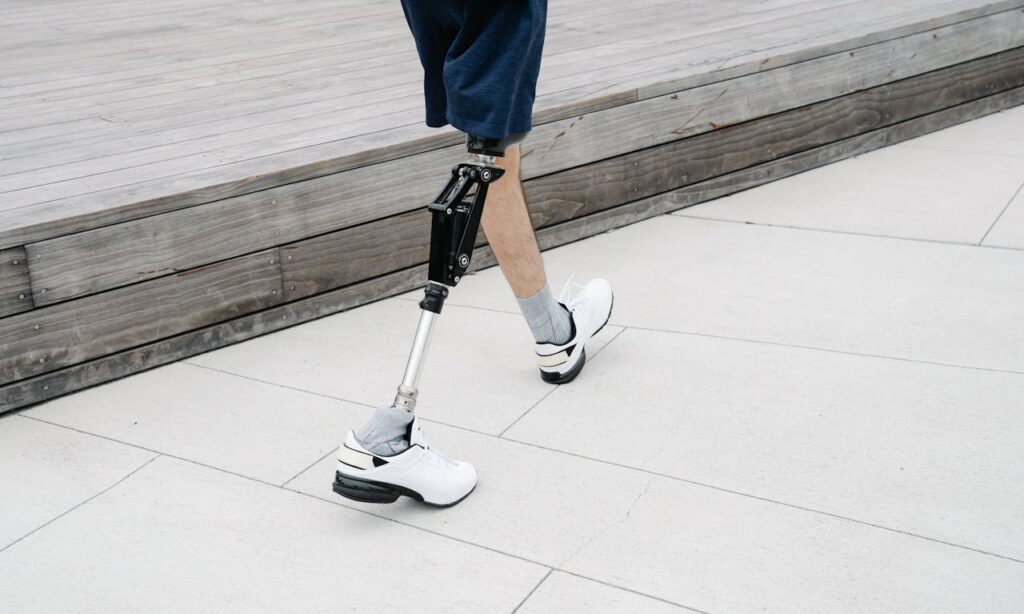
Cultivating Growth Through Goal Setting
The transition to a permanent prosthetic is also an ideal time for users to set new goals—whether they are related to physical capabilities, career ambitions, or personal achievements. Growth requires a vision for the future, and prosthetic providers can actively support users in this process.
For example, businesses can introduce programs or workshops that encourage users to identify their aspirations and create actionable plans to achieve them.
A user who dreams of returning to a sport, for instance, might benefit from a step-by-step roadmap that includes building strength, mastering advanced prosthetic features, and participating in adaptive athletic events.
Building Resilience Through Adaptability
Growth is not a linear process, and users may encounter setbacks or challenges along the way. Businesses that recognize and address these realities can help users build resilience and maintain momentum.
For instance, offering flexible support services—such as on-demand consultations, repair assistance, or temporary replacements—ensures that users feel supported even during difficult times.
Encouraging open dialogue between users and prosthetists also creates a safe space for addressing concerns and finding solutions, reinforcing the idea that challenges are manageable and growth is always possible.
Moreover, designing prosthetics with adaptability in mind—such as modular systems that accommodate evolving needs—allows users to transition seamlessly as their goals and circumstances change.
Businesses that emphasize this adaptability provide long-term value, ensuring that users see their prosthetic as a reliable partner in their journey.
Fostering a Community of Growth
Growth is often accelerated by connection. Surrounding users with a supportive community of peers, mentors, and professionals can inspire them to push their boundaries and explore new opportunities.
For businesses, fostering this sense of community can take many forms. Hosting user meetups, sponsoring adaptive sports events, or creating online platforms where users share stories and tips are all ways to encourage collaboration and camaraderie.
Highlighting real-world examples of individuals who have achieved remarkable milestones with their prosthetics further reinforces the idea that growth is limitless.
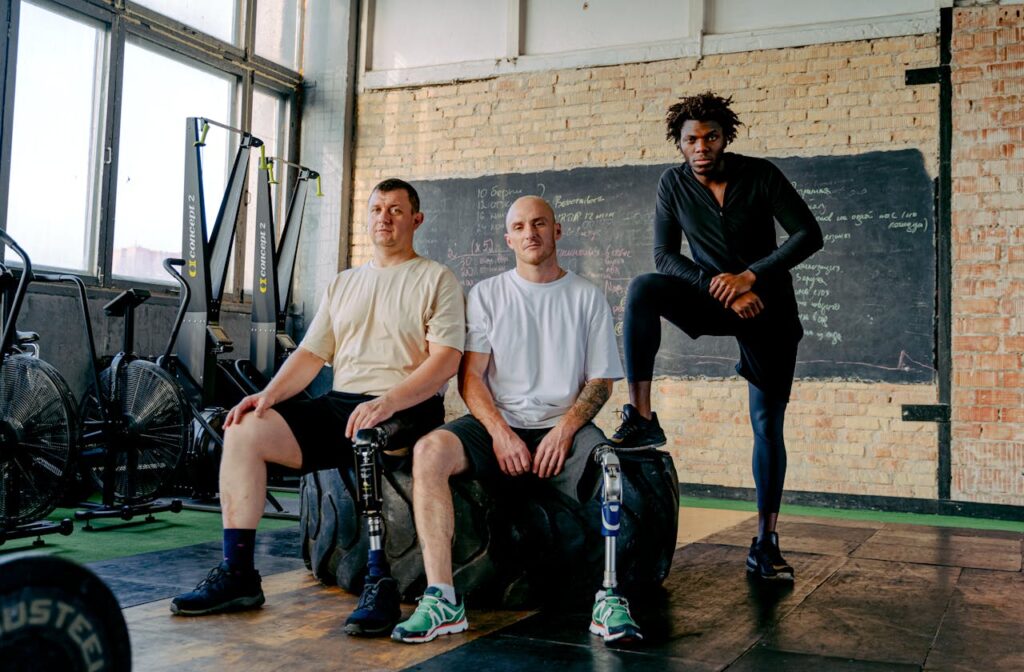
Beyond the individual, these initiatives also benefit the broader user base by normalizing prosthetic use and showcasing the diversity of what is possible.
Businesses that invest in building and maintaining such communities solidify their reputation as not just providers of products, but as catalysts for transformation.
Driving Continuous Innovation
The journey toward independence and growth doesn’t end with the adoption of a permanent prosthetic—it evolves with new technologies, designs, and ideas.
For businesses, staying at the forefront of innovation ensures that users continue to benefit from advancements that enhance their lives.
For instance, integrating advanced sensors that provide haptic feedback or developing prosthetics that sync seamlessly with smart devices are ways to redefine the user experience.
By creating upgrade paths and offering users the opportunity to trial new features, businesses encourage ongoing engagement and loyalty.
Long-Term Adaptation: Living with a Permanent Prosthetic
Transitioning to a permanent prosthetic is not the end of the journey—it’s the beginning of a new phase of adaptation and growth. Long-term success depends on integrating your prosthetic seamlessly into your daily life and maintaining a proactive approach to your physical and emotional well-being.
Developing Routine Integration
Over time, your prosthetic limb should feel like a natural part of your daily routine. Whether it’s performing basic tasks like walking, cooking, or commuting, or engaging in activities that require greater dexterity or endurance, consistent use helps build familiarity and confidence.
To ease this integration, businesses can offer training resources that address common challenges. For instance, tutorials on navigating stairs, carrying objects, or adjusting to different surfaces can empower users to approach new situations with confidence. Personalizing these resources based on the user’s specific lifestyle and prosthetic features adds an extra layer of value.
Building Physical Resilience
Living with a prosthetic limb requires ongoing attention to your physical health. Strengthening muscles, maintaining balance, and addressing potential strain are all key to long-term comfort and performance.
For users, incorporating regular exercise into their routine helps maintain physical resilience. Activities like yoga, swimming, or physical therapy can improve posture, flexibility, and strength, reducing the risk of complications.
For businesses, collaborating with rehabilitation centers or fitness professionals to provide tailored exercise plans can enhance user satisfaction. Offering follow-up consultations or progress tracking tools ensures users stay on course and receive the support they need to thrive.

Embracing Opportunities for Personal Growth
A permanent prosthetic opens doors to new experiences and opportunities. Whether it’s returning to a favorite hobby, pursuing a new career, or participating in sports or recreational activities, your prosthetic is a tool for achieving your goals.
Businesses can inspire users by showcasing stories of individuals who have excelled with their prosthetics. Highlighting examples of people who have overcome challenges and achieved personal milestones demonstrates the transformative power of prosthetic technology and builds a sense of community.
The Role of Technology in Enhancing Long-Term Success
Advancements in prosthetic technology continue to shape the experiences of users, offering new features and capabilities that enhance functionality and comfort. Staying informed about these developments allows users to make informed decisions about potential upgrades or enhancements.
Smart Prosthetics and Digital Integration
Smart prosthetics equipped with sensors, microprocessors, and connectivity features are transforming the landscape of mobility. These devices can analyze movements, adjust to changing conditions, and even connect to mobile apps for real-time feedback and control.
For users, adopting these technologies can significantly improve daily experiences, from smoother walking patterns to enhanced dexterity in upper-limb prosthetics. Businesses that prioritize innovation and offer training on these advanced features position themselves as leaders in user-centric design.
Sustainability and Future-Proofing
As technology evolves, sustainability and future-proofing are becoming increasingly important. Prosthetics that are designed to adapt to future upgrades or are made from recyclable materials offer long-term value while aligning with environmental priorities.
For businesses, adopting sustainable practices and materials not only enhances your brand image but also resonates with users who value eco-conscious solutions. Highlighting these efforts in your marketing and product development reinforces your commitment to both users and the planet.
Conclusion
Transitioning from a temporary to a permanent prosthetic is a journey marked by resilience, adaptation, and growth. It’s a process that transforms challenges into opportunities, enabling individuals to reclaim their independence, pursue their goals, and embrace a fulfilling life.
For users, the key to a successful transition lies in understanding their unique needs, working closely with professionals, and maintaining a proactive approach to care and adaptation.
For businesses, this journey represents an opportunity to make a profound impact by offering innovative solutions, personalized support, and a commitment to long-term success.
By fostering trust, empowering users, and embracing advancements in technology and design, businesses can create prosthetic solutions that go beyond functionality. Together, users and providers can redefine what’s possible, ensuring that every step forward is a step toward greater mobility, confidence, and possibility.



